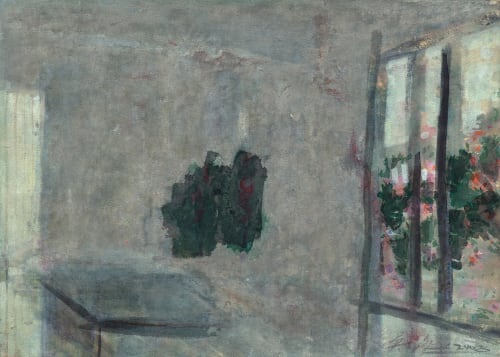On the cusp of our 15th anniversary, Mind Set Art Center is honored to launch “Shan Shui • The Earth”, a solo-exhibition of architect and watercolor artist Wu Tseng Jung. This will be Wu’s second solo show at the gallery and we will put on display nearly 50 of his paintings completed between the year 1996 and 2018. The exhibit is set to run from April 19 to May 29, 2025, with a reception scheduled at 4:00 pm on opening day. We cordially invite you to join us at the event.
Watercolor painting has long been considered a more portable medium compared to oil painting. This quality makes it the preferred option for many artists for outdoors painting. The medium is generally associated with quick and light brush works, and rather high immediacy and transparency. Wu Tseng Jung studied painting under renowned painter Read Lee in his youth. Wu worked as an architect early on, but left the profession in midlife to pursue watercolor painting. Over the course of twenty years, he produced more than five hundred works. His unique methods of rinsing his paintings with water as well as mixing watercolor and acrylic have subverted our understanding of conventional watercolor techniques. It is as if he has taken inspiration from his architecture roots and blazed a new stylistic trail in watercolor, one that blends history and the humanistic perspective.
Wu Tseng Jung doesn’t produce mere live paintings, his works are more akin to a reflection of his inner self, including his melancholic personality and spiritual pursuit, with his composition perpetually oscillating between figuration and abstraction, between spatial depth and color patches, between oil and watercolor. The shifts in Wu’s artistic focus aren’t so much the result of eclecticism, but his way of exploring different aesthetics. The bright light and vibrant colors of Taiwan, the reserved detachment of Japanese aesthetics, and the aloof and ethereal quality of the Chinese literati ink painting all converge in his watercolor works. He is like a solitary literati artist in the modern day. Despite living in the metropolitan Taipei, Wu’s inner spirit soars above the vast canyons and sky.
Wu Tseng-jung's paintings frequently feature Taiwan’s mountainous landscapes, the Drunken Moon Lake, National Taiwan University campuses, and scenic tourist spots. His works across different periods and themes shows a remarkable stylistic diversity. For example, the use of intense colors and brushwork in “Iron Sheet House and Red Brick Fence” show clear Fauvist influences, whereas “Niagara Falls” and “Shiwen River Estuary” and “Royal Palm Boulevard After Heavy Rain” ooze Eastern sensibilities and aesthetics of the ink brush paintings. He adopts a hybrid approach in his other paintings such as “Seven Women Wandering around Drunken Moon Lake” and “Taipei City Hall” . The wide range of stylistic elements in Wu’s works show that the artist has engaged in both the vocabularies of oil painting and that of ink brush, and by doing so, Wu has trailed a new path in contemporary art with his fusion of Eastern and Western visual poetics.
The Taiwanese alpine peaks that frequently appear in Wu Tseng Jung's paintings can be considered the artist’s self-portrait. These towering, unshakable mountains mirror the creator's inner pursuit of excellence and his relentless drive to scale new heights. Painted in 2007, “Mount Dabajian” is Wu's own favorite work — what he calls his "family heirloom”. If Mount Dabajian represents the quintessential mountain in Wu’s eyes, then the shimmering, oceanic renditions of Drunken Moon Lake embody the idea of "water" in his art. Meanwhile, his depictions of NTU campuses and various tourist sites form his artistic observations and interpretations of human affairs. Together, these elements constitute Wu Tseng Jung's own universe, his own “Shan Shui • The Earth”.

